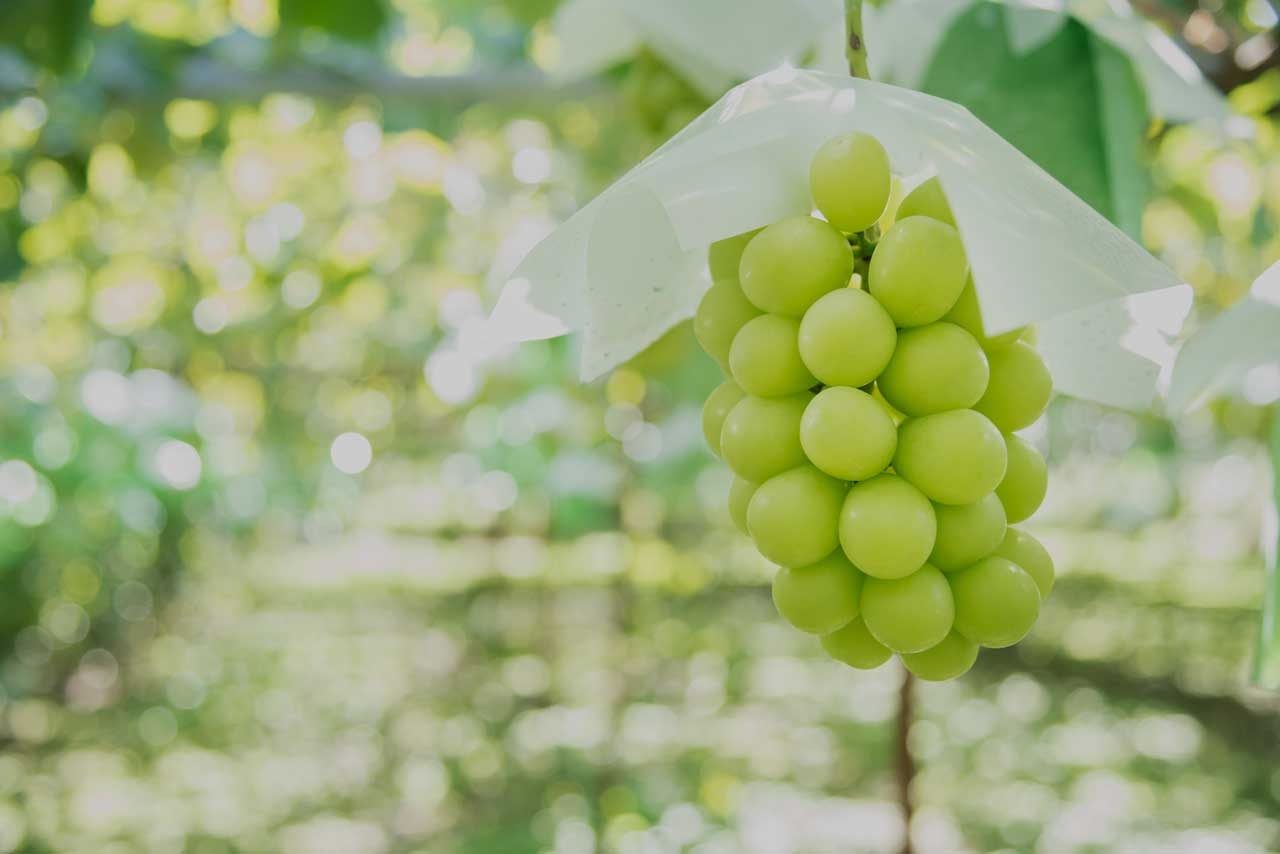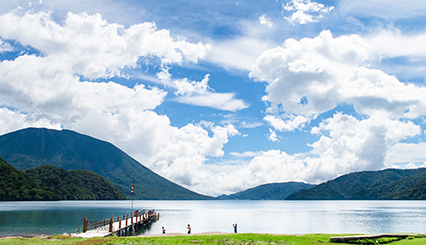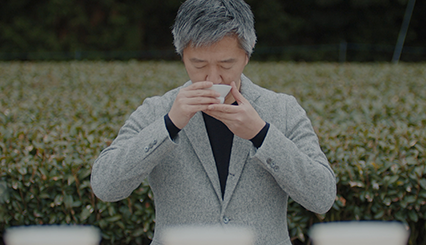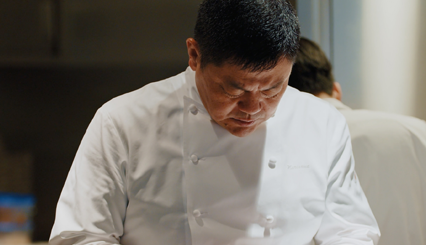CASE STUDY
Search by area
Search by keyword
- All
- Ryotei & Restaurants
- Lodging/Hotels
- Producers
- Technology
- DX (Digital) & SNS
- City Planning
- Utilization
- Gastronomy and Culinary
- Japanese Nature
- Japanese history and traditional culture
- Japanese Food Culture
- Agriculture
- Fisheries
- SDGs
- Local production for local consumption
- Foreigner Activation
- Experience
- Overseas Expansion
- Fermentation
- Public-private partnerships and collaborations
- Sake
- Community Revitalization
- Spirituality
- Japan of the Sea
- Mountain Japan
VIEW ALL
-

Chugoku
9 The Importance of the Capacity to Change
Otafuku Sauce is currently engaged in efforts to communicate the appeals of konamon (flour-based) dishes in Europe, the US, and Asia, and in turn to drive exports of its sauce products. Although to date the company has developed new sales channels through face-to-face sales activities, during the COVID-19 pandemic, these methods these methods were no longer viable. “If we cannot connect with our overseas customers, we cannot survive”—this was the message from general manager of the overseas sales department Hwisung Hong and his team. In response, they sought to develop new sales channels through online cooking classes and YouTube videos, and as a result they achieved a 40% year-on-year increase in overseas sales. The secret to the team’s success was their joint work with TSS Production, a company that supports the development of overseas sales channels through content production. Through the use of media, even regional companies can connect directly with overseas retailers and consumers to open up new channels. Below we delve further into this success story.
Read more -

Minami-Kanto
8 Hand down the process of soy sauce from each region worldwide
Founded in 1854. The wooden tub that has been used for 170 years since the Edo period has kept the traditional soy sauce brewing made in the wooden tub over time. While inheriting the tradition, Kyosuke Iida, the current president, is constantly making new efforts. Currently, there are about 1150 soy sauce makers in Japan. Six major companies account for about 60% of sales, followed by nine second-tier companies, which are the top 15 companies, accounting for about 75% of the oligopoly industry. President Iida had a strong sense of crisis that we would not grow if we were doing the same things as major and second-tier companies. As one of the breakthrough measures, we have taken on the challenge of full-scale overseas expansion business since the 1960s.
Read more -

Kita-Kanto
6 Year-long Grape Production in the Northern and Southern Hemispheres to Transform Japanese Agriculture and Create New Lifestyles
Japanese fruits are world-renowned for their high quality. Behind the scenes, however, the fruit industry in Japan is facing numerous challenges, such as the aging and ensuing decline in number of producers and the rise in competition with other countries. GREENCOLLAR, an in-house venture company from Mitsui Fudosan, was established in 2019 as part of Mitsui Fudosan group’s new business proposal system, MAG!C. GREENCOLLAR’s business is to cultivate Japanese table grapes in Japan and New Zealand, two countries with opposite seasons, and to sell them around the world. In addition to tackling social challenges through its business, GREENCOLLAR is proposing a completely new lifestyle that is neither white collar nor blue collar, but “green collar”.
Read more -

Kita-Kanto
5 Local Tochigi Culture and Ingredients at The Ritz-Carlton, Nikko
The Ritz-Carlton, Nikko opened in July 2020 on the shores of Lake Chuzenji in Okunikko. The luxury hotel sits in an area that is home to the shrines and temples of the Nikko area—where also have been designated a UNESCO World Heritage Site—abundant natural surroundings, rich culture, and ancient history and tradition. Today, it has grown into one of Japan’s leading and often fully-booked hotels. Interestingly, Okunikko in Tochigi Prefecture is recognized to be Japan’s oldest holiday resort, and is now host to a cutting-edge facility in The Ritz-Carlton, Nikko. In addition to its globally acclaimed level of service, the hotel has garnered attention for the thorough harmony and coexistence it has sought to achieve with the area through the creation of business ecosystem, be it in the food, guest activities, or the interior design and finer details.
Read more -
Straddling the Shiota River in Ureshino, Saga Prefecture, the Wataya Besso hotel complex spreads across the 66,000-square-meter property to offer several hot spring baths, restaurants, and a large number of luxurious guest rooms. Even before the COVID-19 pandemic struck, long-established onsen ryokan (traditional hot-spring inns) across Japan had been struggling to survive changes in society and people’s tastes. Faced with these challenges, Wataya Besso’s industry-leading initiatives are gaining attention. We talked with CEO Yoshimoto Kohara, the visionary behind innovative projects which extend beyond normal ryokan operations, including a new workcation office program that integrates all the best aspects of the ryokan, and an initiative in which the hotel serves as a hub for promoting the charm of the local area.
Read more -
Yoshihiro Narisawa, the owner-chef of restaurant NARISAWA in Minami-Aoyama, Tokyo, is one of Japan’s world-class chefs and an artist dedicated to crafting a variety of innovative food creations. For more than 20 years, Narisawa has been focused on the culture found in rural foothill villages of Japan, called satoyama culture, where people coexist closely with nature. He explores the rich food culture and the ancestral wisdom passed down there, and expresses it through his uniquely creative cooking style—establishing a new genre he calls “innovative satoyama cuisine.” His work demonstrates his philosophy of “beneficial and sustainable gastronomy,” environmentally-conscious gourmet dining that shows respect for nature while nourishing body and mind. Narisawa shows his commitment to preserving satoyama culture through his activities in Japan and around the world, and by sharing his message, as he continues to search for the ideal future of food culture.
Read more
記事検索
キーワードから探す
- すべて
- Ryotei & Restaurants
- Lodging/Hotels
- Producers
- Technology
- DX (Digital) & SNS
- City Planning
- Utilization
- Gastronomy and Culinary
- Japanese Nature
- Japanese history and traditional culture
- Japanese Food Culture
- Agriculture
- Fisheries
- SDGs
- Local production for local consumption
- Foreigner Activation
- Experience
- Overseas Expansion
- Fermentation
- Public-private partnerships and collaborations
- Sake
- Community Revitalization
- Spirituality
- Japan of the Sea
- Mountain Japan
VIEW ALL




